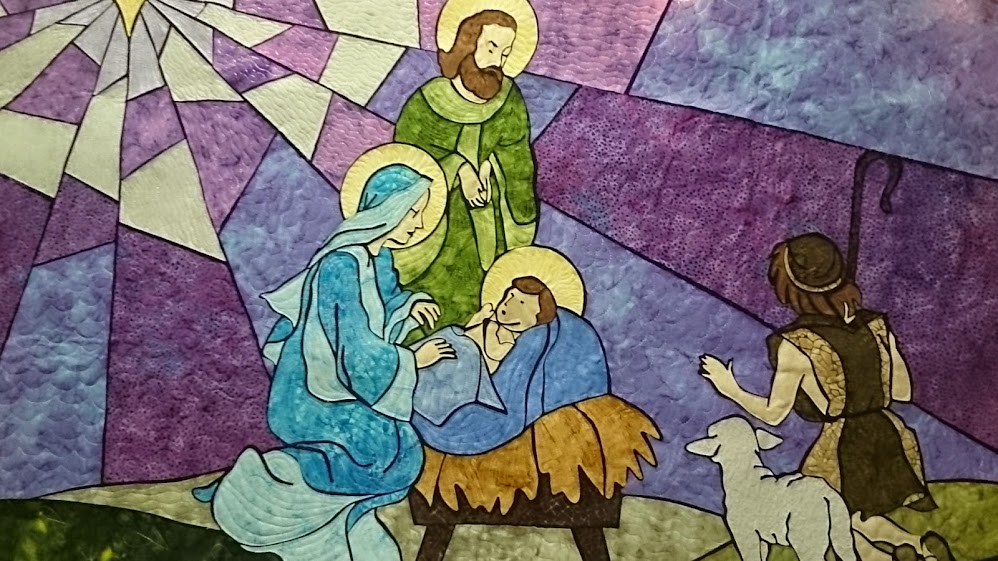Just over 200 years ago, an Austrian Roman Catholic priest named Josef Mohr penned the words to what would become a Christmas classic.
A couple years later, a teacher and organist, Franz Gruber, would add music to the poem. The result: the German version of Silent Night, Holy Night.
I have cherished memories of being in various parishes over the years during the Christmas season, singing my heart out with hundreds of parishioners, straining to hit that high note (“sleep in heavenly pea-ce!”) and experiencing a sense of great reverence for what transpired that night when Christ was born into our world as a baby.
From the birth of Jesus in Bethlehem to the Epiphany, the Christmas liturgical season is filled with many heartwarming images of the Holy Family.
In Christian art, we generally see an infant Jesus that is calm and unruffled whether it is in the first night of his life in a stable or on the flight to Egypt. So, when Pope Francis invited Catholics to meditate on the image of baby Jesus during the Christmas Eve Mass from the Vatican this year, this is where my reflection began: with a quietly cooing child, happily relaxing in his mother’s arms.
Of baby Jesus, Pope Francis said: “The One who embraces the universe needs to be held in another’s arms. The One who created the sun needs to be warmed. Tenderness incarnate needs to be coddled. Infinite love has a miniscule heart that beats softly. The eternal Word is an “infant”, a speechless child. The Bread of life needs to be nourished. The Creator of the world has no home. Today, all is turned upside down: God comes into the world in littleness. (God’s) grandeur appears in littleness.”
Having recently spent some time with a friend and her five-month-old child, I found that the natural evolution of my musings progressed to the next bit: the happenings after the “silent” parts of the “night,” when “speechless” babies loudly and insistently communicate their need for warmth or coddling or nourishment. Did the “holy night” become any less holy when Jesus’ cries pierced the “heavenly peace” that first Christmas?
For someone like me who has relatively limited experience with crying babies, they can be a bit terrifying. When the quiet calm of a content and smiling baby turns on a dime into wailing and tears, when the sequence of soothing words and swaying movements that I use to re-establish peace fails, these panicked moments don’t feel very holy.
As we head towards the newness of New Year’s Day this year, though, I believe that there is value in staying with the image of the needy baby as we contemplate how God is calling us to growth.
The month of January is named for the Roman god of beginnings. Cultures throughout the world have viewed this as a time for personal and collective rebirth. As the Pharisee Nicodemus asked an adult Jesus in the Gospel of John, we might also question how we can be reborn.
I wonder if a starting point doesn’t lie in recognizing and befriending the helpless babe that lies inside each of us. At times, I can be like the quiet and calm infant, contentedly receiving love, kindness, and nourishment from those around me.
At other times, I am the (at least, inwardly) screaming, frustrated and red-faced child, vulnerable and unsettled, unable to articulate my needs to myself or to those around me. In his homily, Pope Francis encouraged us to ask God for the grace “to love littleness,” and it is a grace, because it can be hard to love this needy, frustrated, “weak” part of ourselves.
Why ask for the grace to love littleness in this context? Because it is in those moments of recognizing my littleness and need where I am most open to meaningful change or “rebirth” in my life.
As the baby cries to be fed so that it can develop physically and emotionally, the instants where I see that my needs are beyond what I can handle by myself, these are the moments when I am most ready for God to take over and nourish me into new growth.
In 2020, Pope Francis was quoted as saying “It is a beautiful homily when a child cries in church, a beautiful homily.” There is still room and need for the silent, holy nights in our lives. We rejoice when they are upon us! However, we remember, too, that holiness and grace don’t stop when our inner silence and calm is pierced by needs, desires and vulnerabilities as we live out our everyday lives. Let us pray for the grace to love our littleness, the littleness that calls us to growth in God.
-Sister Michelle Langlois, fcJ is chaplain and a teacher at St. Thomas More junior high school in Edmonton. She was honoured with a 2021 Excellence in Catholic Education award from the Edmonton Catholic School Division.
This reflection first appeared on Weaving One Heart, a blog for the Faithful Companions of Jesus religious order.

